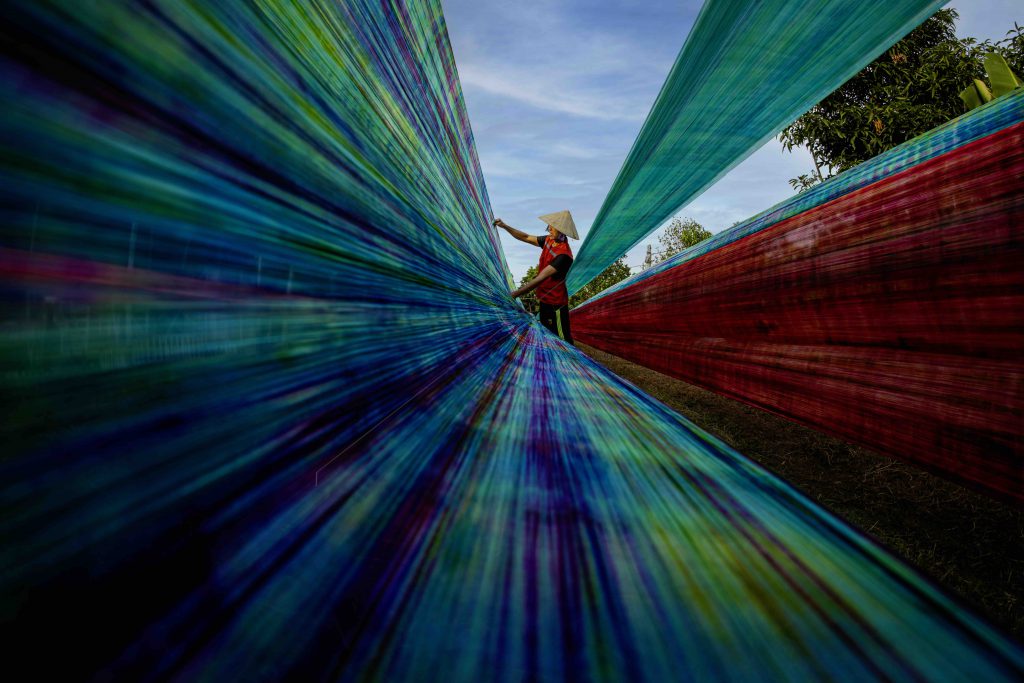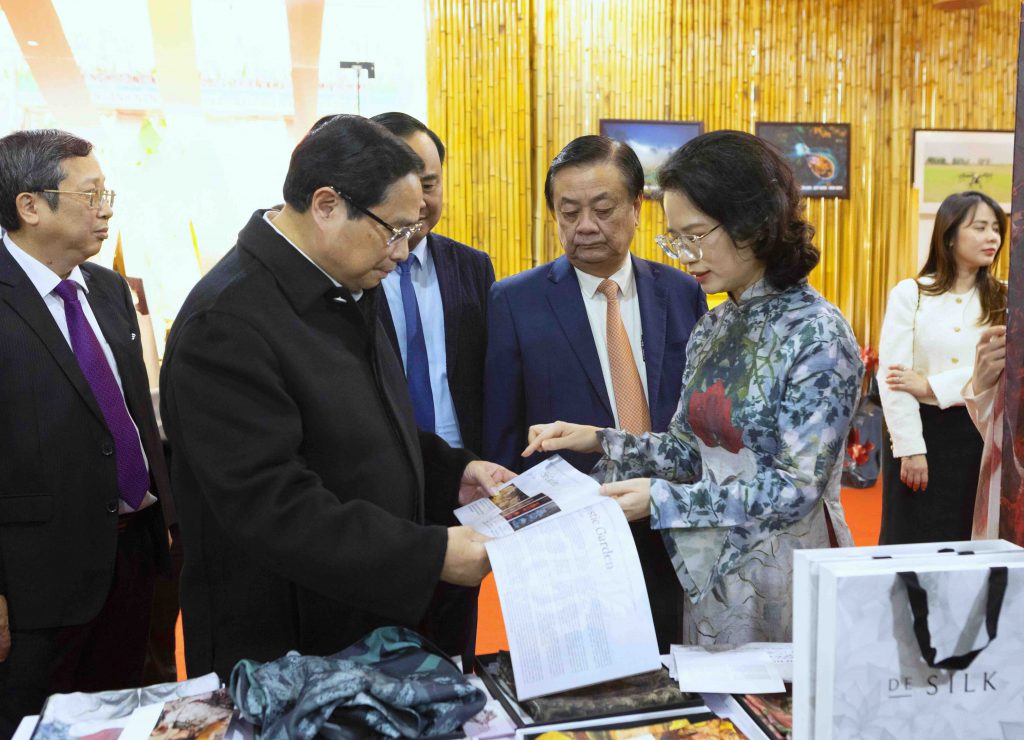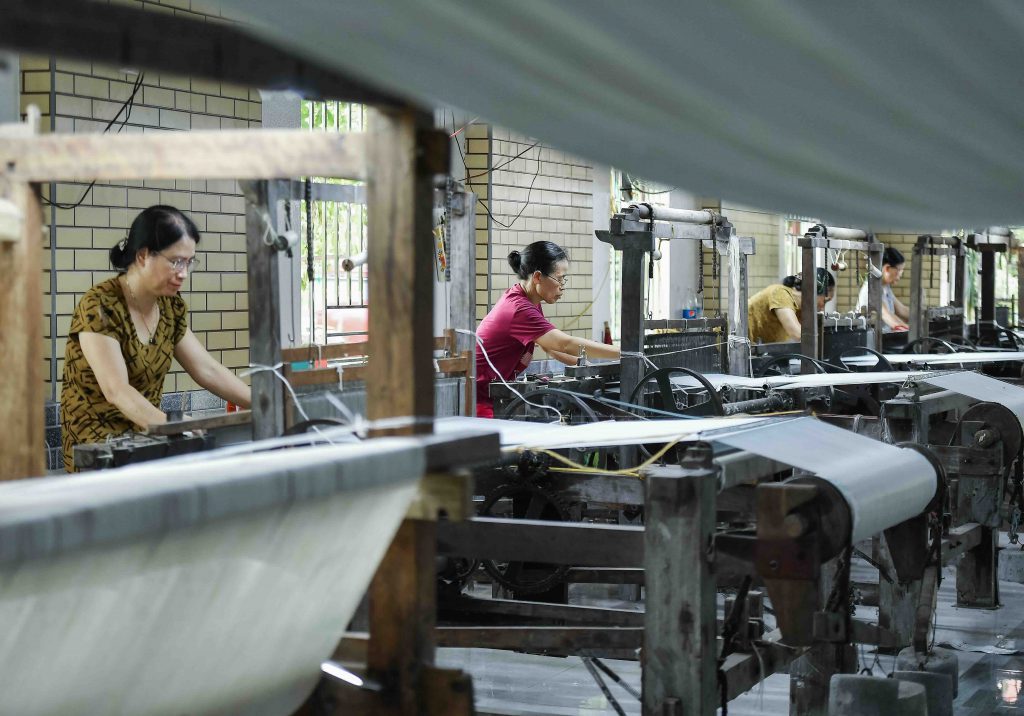Story: Chi Vu
Photos: Le Huy, Amachau, Dao Canh, Do Van Canh
Once the pride of many traditional craft villages, Vietnam’s silk industry now finds itself at a pivotal juncture as it restructures and reaches for a place in global value chains.

Revival after crisis
The 1990s and early 2000s witnessed a dramatic decline in silk production. Van Phuc village, for example, once boasted more than 1,000 silk-producing households, yet by 2005 that figure had fallen by over 70 percent. A flood of low-priced industrial fabrics, especially from China, left handcrafted silk unable to compete on cost, while branding and legal protection were virtually nonexistent.
The tide began to turn after 2010. According to the Vietnam Agro Processing and Market Development Authority, the country now cultivates about 12,000 hectares of mulberry and produces nearly 1,500 tons of raw silk annually, ranking fifth in global sericulture output. This is an encouraging sign, though not enough to establish Vietnam’s silk on the international stage.
While export turnover reached about USD 60 million in 2020, by August 2024, shipments were down nearly 14 percent year-on-year. Meanwhile, imported silk, primarily from China, surpassed USD 36 million. These figures reveal that, despite the rebound, Vietnam has yet to master its domestic supply chain or capture a significant slice of the premium silk market.
Experiential tourism: a new lever for repositioning
Between 2016 and 2019 – “golden years” for Vietnam’s tourism industry – international arrivals almost doubled and revenue topped USD 32 billion. Many craft villages, including silk centers, became sought-after cultural experiences.

In places such as Van Phuc, Hoi An, Bao Loc, and Phung Xa, showrooms combined with on-site workshops connect visitors with the weaving process. In Hoi An, an interactive silk village has become a popular attraction, while Phung Xa is now famed for handcrafted lotus-stem silk, an emblem of refinement and culture. Craft villages enrich tour itineraries by offering glimpses into local life, just as tourism supplies villagers with customers and free brand exposure, helping them to earn a living. During the Covid-19 hiatus, however, the lack of tourists dealt a heavy blow to every silk-making community.
The boom has also created a downside: industrial textiles masquerading as hand-woven silk. Surveys indicate that up to 60 percent of items labeled “Vietnamese silk” at tourist sites are actually cheap imports. Even prestigious domestic brands have been caught substituting Chinese synthetic silk for handcrafted fabrics.
Due to a lack of unified certification and quality standards, people’s trust in Vietnamese silk has eroded on home turf. Although visitor numbers remain healthy, shopkeepers in Van Phuc report sharp drops in the sales of real hand-woven silk.
From local roots to global reach
Vietnam is home to over 5,000 craft villages, from pottery in Bat Trang and woodcarving in Dong Ky to folk painting in Dong Ho and fish sauce on Phu Quoc. Beyond their products, these villages preserve cultural memories and indigenous knowledge, gradually carving out a place in global value chains through tourism and e-commerce.
For Vietnamese silk to earn its place, the sector needs a comprehensive strategy that extends beyond production, encompassing rigorous quality control, innovative design, supply-chain digitization, and a broader cultural-commerce ecosystem.

Thailand has succeeded with its Thai Silk campaign, overseen by national bodies. Switzerland has long leveraged the Swiss Made label. In Vietnam, consumers still struggle to discern fake items from genuine ones and local wares from imports. Establishing a certification and quality assurance system is essential for restoring market trust and standardizing Vietnam’s silk brand.
At the same time, it is essential to digitize the supply chain and expand e-commerce channels. As global trade moves online, any delay risks Vietnamese silk losing ground to “handmade-style” products from countries with more efficient logistics.
A global trade strategy must also prioritize design – the bridge between raw materials, traditional culture, and the language of modern markets. Many Vietnamese silk brands are blazing a trail by infusing designs with traditionally inspired motifs and employing high-quality digital printing. These creations celebrate nature, culture, and craftsmanship, serving not merely as commodities but as invitations to experience Vietnam’s living heritage.
Still, individual initiatives will falter without an integrated ecosystem that unites designers, artisans, tour operators, and digital platforms around a shared goal. Budding models, such as design workshops in Van Phuc or bespoke ao dai tailor shops in Hoi An, demonstrate the potential to craft consumer journeys rich in feeling. This approach sells more than a product; it tells a story that lets customers become part of the local culture.
Revamping the silk sector is not just about redesigning products but requires a shift in mindset. Vietnamese silk must evolve from “traditional silk” in the old sense to “silk with identity and international stature”. Only then can heritage truly be elevated. Beyond economic benefits, this is an opportunity to promote Vietnam’s cultural identity on the global stage, through a material passed down by our ancestors and a design language shaped by this new era.










